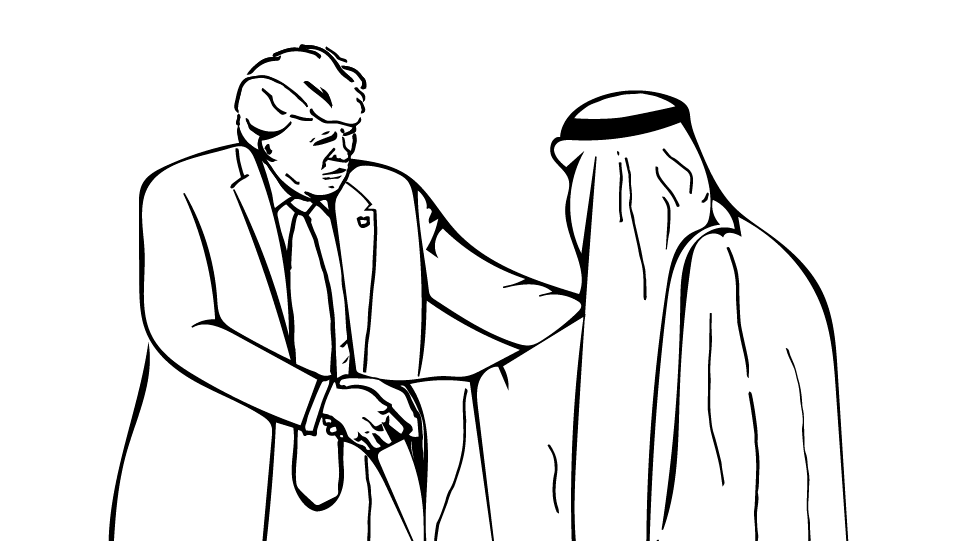
Brands & Bone Saws
Feelings are biochemical mechanisms that all mammals and birds use in order to quickly calculate probabilities of survival and reproduction. Feelings aren’t based on intuition, inspiration, or freedom. They are based on calculation. When a monkey, mouse, or human sees a snake, fear arises because millions of neurons in the brain swiftly calculate the relevant data and conclude that the probability of death is high.
—Yuval Noah Harari, 21 Lessons for the 21st Century
Evidence that a Washington Post journalist entered a consulate — often thought of as a safe haven — in Turkey and was then abducted, tortured, murdered, and dismembered has neurons firing. Why? Common sense. The algebra of deterrence (probability of getting caught x penalty = serious shit) is the only thing standing between any of us and a bone saw.
A. Fucking. Bone. Saw.

Brand Building Basics
The basics of brand building are pretty, well … basic: take an average/good beer, salty snack, car, or society; establish aspirational brand codes around the product or service; reinforce and invest in these codes; and you have a powerful engine of value creation — a brand. Nestle, the Gurkas, Apple, and the Catholic Church (especially the church) command greater space than they occupy because of their promise, vs. their performance (remember the Newton?). Brand can convince us to pay $1,450 for something that costs $450 to assemble (iPhone) or save an organization that institutionalized the rape of children (Chipotle). Just kidding, I’m talking about the church. Chipotle is awesome. But I digress.
The Founding Fathers were, at their core, incredible marketers who knew the Constitution needed to reach beyond its grasp and paint the promise of America. The strongest brand in the world, delivering loyalty and irrational returns on investment — that’s the US. When you are 5% of the world’s population but command a quarter of its resources, then we, the US, are the Jedi master of brand. Core to our brand code is independence, equality, rule of law, liberty, risk-taking, generosity, work, and moral leadership. In sum, we’ve always tried to be the good guys.

People don’t buy Nikes because it’s a better shoe but because it represents an American code: competitive excellence. The world doesn’t buy Fords because they are good cars, but because they represent the promise of a burgeoning middle class. The real estate in NYC and Los Angeles remains (irrationally) buoyant, as foreigners believe the US code includes reverence for private property that we’ll honor with rule of law. The MBA program at NYU Stern is good not only because we graduate captains of capitalism, but because we give them diverse experience in one of the most cosmopolitan cities in the world.
Brand building is hugely expensive. Advertising, building a culture of excellence, maternity leave, the US Navy, and clearing the shelves of every bottle when there’s a health scare are all really expensive. When there’s a market, a lot of short-term profits can still be made after we’ve stopped investing in the brand. It’s tempting.
The US is a $20T economy. To erode our brand code is to weaken the margins and loyalty of every product and service we produce. Billions of people buy our products and services based on our discipline to sacrifice short-term profits in support of our code. Eroding our brand in exchange for $15–$110B in arms sales (a value of 0.1%–0.6% of our GDP) is not only the wrong thing to do, but the stupid thing to do.

False Harvest
There is a time when it no longer makes sense to invest in a brand, but to harvest it: reduce marketing expenditures for the purpose of maximizing cash flow. The euro, Cadillac, Campbells, Outback Steakhouse, Crocs, and the Clintons are all brands whose stakeholders have decided to milk them while their owners see better places to invest. If the US were a company, it would appear that its board (fiduciaries for stakeholders) had consciously decided to harvest the brand. Adding a trillion in debt and not making the requisite investments in the brand association of moral leadership when the economy is strong are the equivalent of a private-equity guy on your board deciding, “We need to get our money out even if it constrains future growth.”
This isn’t necessarily the wrong strategy. It all comes down to one question: Is the US a growing or mature brand?
The capital allocation reflects fiduciaries (our leadership) representing the 1%, who have given clear instructions: “If the brand survives, great … but we want our money out, now.” However, there is also a large cohort of people, from both parties, who believe the US is a growth brand that warrants continued investment. Fiscal responsibility and moral leadership are expensive, and worth it.
As such.
The US needs to suspend all arms sales, freeze assets, and impose sanctions against Saudi Arabia. The easiest way to validate this notion is to call on millions of neurons, informed by the history and code of the strongest brand in the world, the US. How to summon the neurons? Easy, think of two words: 1. Bone 2. Saw.
Life is so rich,


